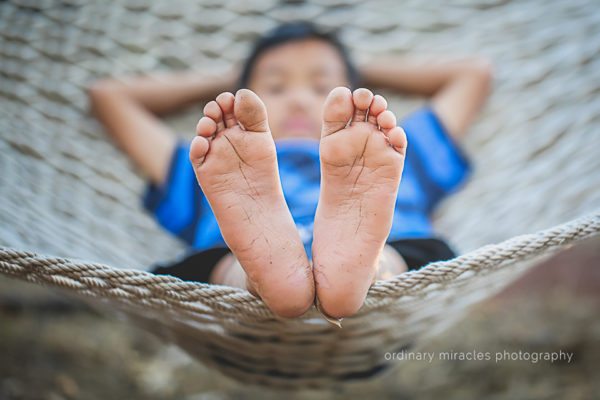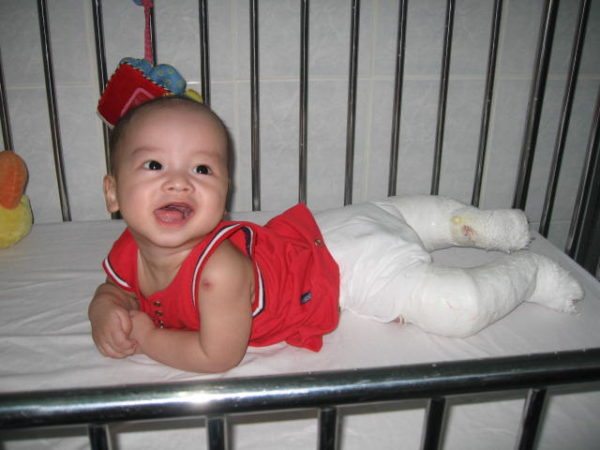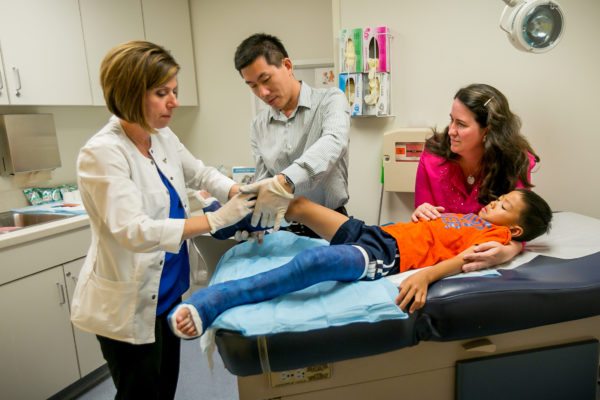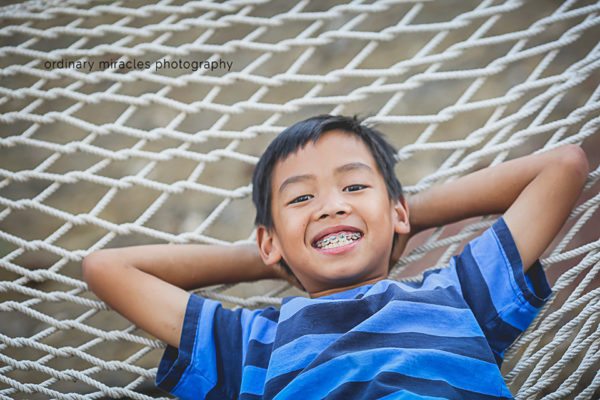
Jude is amazing.
He’s taken everything in stride, and I think he even has a bit of pride about his scars, that sense of I did this and not only am I okay, but I’m better and I love who I am! And, of course, I can’t disagree with him. He is awesome and a wonderfully-made, treasured son even from the very beginning.
Jude was born in a hospital in SaiGon, VietNam in 2007 with congenital talipes equinovarus, otherwise known as bilateral clubfoot. He was abandoned in the hospital and an orphanage became his home. When he was around 6 months old Jude was treated with bilateral casting to correct his deformed feet. Around this time we were sitting at our computer half way across the world seeing his picture for the first time. And we knew he was the child we we had been aching for.

Jude’s feet were corrected, but unfortunately the care in an orphanage is often less than optimal, and Jude’s feet quickly reverted to their original deformed position when the orphanage refused to have him wear his braces necessary after correction. And this was the wonderfully-made, gorgeous 13-month-old baby we lovingly received in 2008.
Our son.
Our beloved Jude.
Within days of getting home, we started treatment again with a local pediatric orthopedic surgeon. From my research I knew that the Ponseti method of treatment was the best, and of course we wanted the best for our son. Unfortunately there were no Ponseti certified doctors in our area much less ones that were trained in treating older children, (and 13 months old absolutely is an older child in the land of clubfoot treatment). And, although he wasn’t certified, this doctor seemed to be well-versed and experienced in the Ponseti method, not to mention that he was conveniently located in our city and really seemed like he wanted the best for our son. We proceeded with treatment and Jude’s feet were corrected for a second time in about 3 months. He was walking about 5 months later and remained in night-time braces until age 5 1/2.
We were pretty sure we did everything right, and Jude’s club foot journey was done. We gladly put that part of his journey in our past and watched Jude grow into an amazing, sensitive, smart and athletic boy! But God’s plan was different than the one we were counting on, and just after Jude turned 8 years old, despite following every protocol to the letter, his feet relapsed again.
This time we put a lot more research into doctors and insisted on having a Ponseti certified doctor. What I quickly learned is that although many well meaning doctors say they treat club foot and even if they are Ponseti certified, there are very very very few doctors in the United States (the world actually) that successfully treat clubfoot in older children with long-term success. I read many many scenarios about clubfoot kiddos that had unnecessary surgeries or didn’t have the importance of bracing explained to them, and children that had unnecessary relapses because of it.
A 2 year old child, with corrected clubfoot, has an 80% chance of relapsing if they discontinue wearing braces at night!
A 3 year old a 40% chance of relapsing!
And a 4 year old a 15% chance!
Yet time and time again I heard stories of doctors saying it was okay to discontinue bracing prior to age 5 and/or do surgeries that were against protocol. Now I don’t think these doctors are bad, in fact I think these doctors are well-meaning and think they have the skills, but the Ponseti method “is very precise and requires great attention to detail.” Treating older children (older than infants) with clubfoot is a very different skill set than treating newborns and infants, even for Ponseti certified doctors. And because we didn’t want to look back with regret, we decided to only see Dr. Morcuende in Iowa or Dr. Dobbs in Missouri for our son’s third clubfoot treatment. Both these doctors were trained by Dr. Ponseti himself and are the world’s leaders in clubfoot treatment, especially for older children and more complex treatment.
I’m going to beg you here, and maybe even say something controversial, but from a mama that has been there and done that and made the mistake of selecting a doctor based on cost and convenience only to have her son relapse later, if you are adopting a child that is older than an infant with clubfoot, please see only 1 of these 2 doctors for treatment. We choose to travel half way across the country for Jude’s treatment even though it was a considerable inconvenience and expensive. But in the grand scheme of things, this really wasn’t a big deal.
In the end, no matter the outcome, we wanted to be absolutely positive that we had done everything we could for Jude and his future. We wanted to look back and know that the extra expense (money we did not have, but rather racked up on credit cards) and inconvenience of seeing an out-of-state doctor, (my husband taking time off work and watching our 6 other children at home while I traveled with Jude half way across the country) would be absolutely positively be worth it.

Just after his 8th birthday he was treated for a third time by Dr. Matthew Dobbs in St Louis, MO. Jude and I traveled by plane, 6 times over the course of 5 months. He had serial casting to correct the position of his feet and then surgery (a tendon transfer) for which he stayed overnight in the hospital. I pushed him in his wheel chair through airports for each trip. After his casts were removed he had a year’s worth of physical therapy, and today is in every way shape and form a normal boy, and a very athletic one at that! Jude loves playing baseball more than anything and is a fabulous golfer too. He runs, jumps, and moves just like any boy his age.
In hindsight I wish I would have known some things about clubfoot and special needs in general.
In our opinion, clubfoot is a very manageable special need. During treatment, weekly casting is done to correct the position of the feet, and a very minor out-patient surgery is usually needed towards the end of the casting. This whole process is 2-4 months long. After correction has been attained, the child wears braces every night when they sleep till about age 5. After age 5, as long as there is no relapse, there is nothing that needs to be done. Nothing. Likely for life!
As long as you’ve selected your doctor carefully and followed the bracing protocol faithfully, the relapse rate is only 6%. But even if relapse occurs the treatment is re-casting. And really, if you can do it once you can do it again.
There are several warning signs that clubfoot is not being treated properly:
– Proper treatment includes casting up to the mid thigh/groin.
– Bracing should be done immediately after casts are removed, not waiting even a single day.
– Removing the casts should be done no more than 1 hour before the new casts are applied.
– Casting should be done with plaster.
Not following these protocols are a red flag that a consult with a new doctor is needed.

Sometimes (often? always?) the extent of a child’s special needs is unknown for a long time. We were pretty certain that with our diligence, Jude wouldn’t need further care after his second correction. We were wrong! He relapsed, and we found ourselves amidst another round of correction. For all we know there’s another one in our future, and that’s okay.
Special needs, even “minor and medically correctable” ones are often unpredictable and need a life time of treatment. As adoptive parents of special needs children we absolutely must be okay with that. Learning to trust the Lord’s plan instead of my own is good indeed.
If you’re interested in reading the entire journey of Jude’s most recent clubfoot treatment click here. For a timeline of Jude’s 2nd treatment click here.
– guest post by Nancy: email || facebook
And PS – both Dr. Morcuende and Dr. Dobbs will consult with IA parents via email (responding pretty quickly) even if the child is not a patient. ‘Cause they’re both pretty amazing like that!

























Leave a Reply